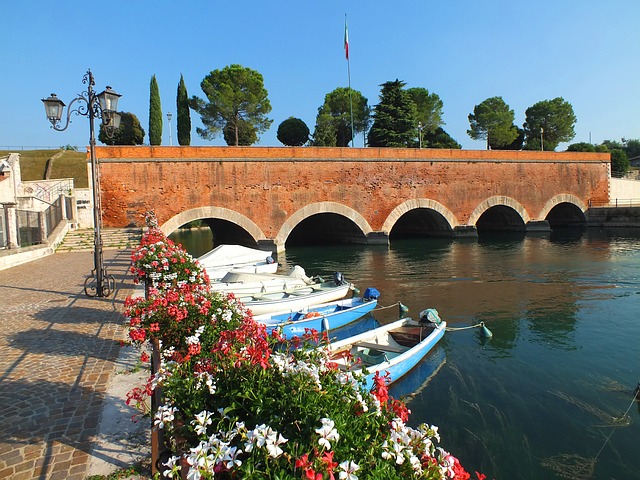
Olfactory Itinerary III
Acqua del Garda is created from the essence of a magical place and from the scents of its land and fruits.
Discover the itinerary of Soave del Garda, starting from Soave and ending in Colognola ai Colli. You’ll go through this generous land, made mainly of hills, volcanic soils, and stretches of vineyards.
From Soave, we proceed towards Monteforte d’Alpone, with its very high steeple and end in Illasi. Next stop from here is a lovely town with Roman origins; Colognola ai Colli, situated on green hills, it offers a journey to rediscover the emotions and the experiences that only unique places can give.
From Soave to Colognola ai Colli
The itinerary that takes us to discover Soave Wine can only start from Soave itself. Here a breathtaking view of hills, volcanic soils and vineyards welcomes us.
Soave is a medieval city surrounded by walls that extend to the hill where the castle is erected. The main entrance is characterized by a drawbridge and a tower, on which it is possible to admire a low relief of San Giorgio. The castle consists of the main tower and the palace, surrounded by a triple wall that forms three yards. The first yard was build by the Venetians in the 4th century and it includes ruins of an old church. The second yard is called ‘Madonna’ because of a painting of the Holy Mary, made in 1321. The third yard is where the tower is built. It was a fortress and probably a prison and torture area. The visit of the village continues with the old town centre where it is possible to admire San Bonifacio’s Palace, which was erected in 2nd century as well as Palazzo Cavalli with its gothic-venetian style and San Lorenzo’s church. From Soave we continue towards Monteforte d’Alpone. In the town centre it is possible to visit the neoclassical Santa Maria Maggiore’s church while few steps away we encounter Palazzo Vescovile, a Venetian style masterpiece of the great Michele da Caravaggio. The building is refined by a suggestive cloister, as well, and a nativity made by Francesco del Torbido in 1534. Proceeding north, the next stop is Montecchia di Crosara, a little town, characterized for San Salvatore’s church. Here it is possible to admire precious Gothic paintings.
Next is Illasi, however, on the way we stop in Cazzano di Tramigna, where it is possible to enjoy the “Valle dei ciliegi (Cherries Valley) ” – famous for its spring blooming scents and panorama. Once in Illasi, it is impossible not see the, almost untouched, ancient manor house which overlooks the town centre built around aristocratic villas such as Villa Perez Pompei-Sagramoso. This villa was home to the feudal government. Its impressive park extends until the very top of the hill, where the ruins of the castle start. Another square hosts the elegant Palazzo Municipale. From here, a long cypress boulevard opens in the direction of Val d’Illasi – a garden with vineyards, cherry trees and secular olive trees. Towards south we can visit San Pietro di Lavagno. This village is surrounded by numerous mansions such as Villa Verità-Montanari, also known as: “The Boschetto” (Little Wood), thanks to the outstanding Italian-style park. Last stop of our itinerary is Colognola ai Colli, a gorgeous little town situated on the Soave’s hills. The numerous ruins that can be found here testify to its Roman origins. Among these we find the 6th century Villa Spinola, with its beautiful park, and Villa Peverelli.
Go back...
 account
account cart
cart